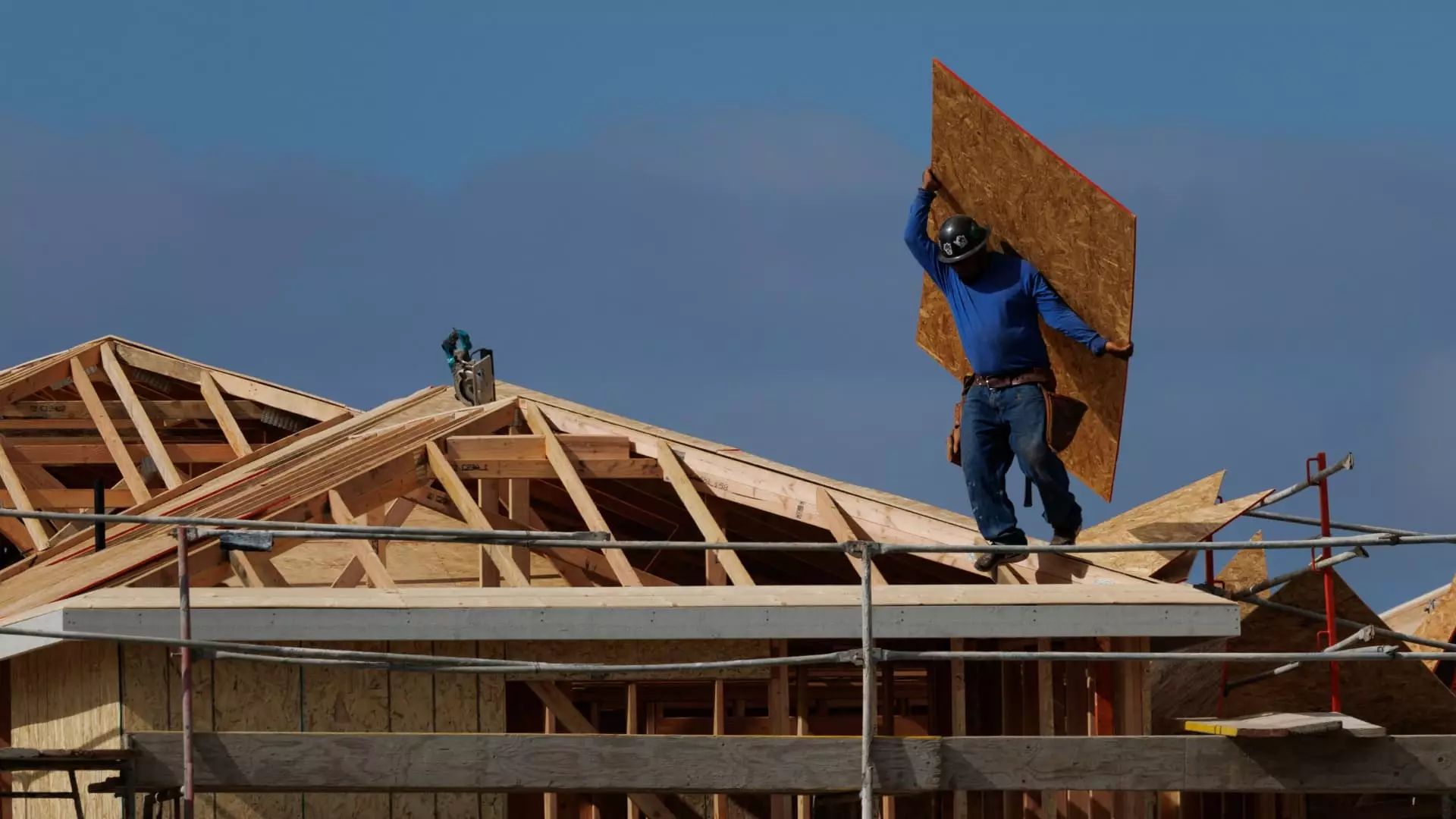The once-sturdy backbone of America’s economy—the homebuilding sector—is now teetering on the edge of a profound crisis. For years, the industry experienced a buoyant resurgence fueled by low interest rates and an insatiable demand for housing. Today, that optimism has evaporated, replaced by a landscape marked by uncertainty and declining confidence. Builders are tightening their belts, slashing prices at rates unseen in three years, a stark indicator of a sector desperately trying to stay afloat amid a storm of economic challenges. It’s a warning sign that demand has waned significantly, driven not only by elevated borrowing costs but also by the broader economic climate that has sapped consumer confidence.
The Illusion of Slight Progress
While the latest builder confidence report shows a marginal uptick—reaching 33 on the NAHB index—this is hardly cause for celebration. Anything below 50 signifies a negative outlook, and with the index having languished in this territory for a relentless 15 months, the industry’s resilience appears fragile. The slight increase attributed to recent legislative measures offering marginal tax relief serves more as a Band-Aid than a cure. These small gains starkly contrast with the underlying reality: affordability is worsening. Mortgage rates stubbornly hover at elevated levels, making homeownership less attainable and exacerbating the crisis. Despite government attempts to stimulate the economy through policy, real demand remains suppressed, exposing the fundamental weakness in the housing market.
Price Wars and Margin Dilemmas
A distressing trend has emerged—massive price cuts by builders eager to maintain sales momentum. Nearly 38% of homebuilders resorted to trimming prices in July, the highest recorded since tracking began in 2022. These discounts, averaging 5%, are not merely temporary measures; they reveal a brutal reality where profit margins are under relentless pressure. Builders are desperately trying to lure buyers with rate buy-downs, attempting to offset the sky-high mortgage rates that thwart affordability. However, such strategies have their limits. According to industry analysts, outright price reductions threaten to erode earnings and could trigger a downward spiral of declining margins and stagnant growth. It’s an industry caught between a rock and a hard place, where short-term tactics threaten long-term viability.
Demand is Dwindling, Prospects Darkening
Consumer interest continues to fade, with buyer traffic plummeting to lows unseen since late 2022. Only the Northeast remains relatively resilient, experiencing a slight uptick in builder sentiment, while other regions witness a decline. Expectations for future sales have shown a modest improvement, yet key indicators—current sales conditions and buyer traffic—point to a bleak outlook. Forecasters predict a persistent decline in single-family housing starts throughout 2025, driven by the relentless affordability crisis and rising construction costs. The complexity of balancing supply and demand has become a devastating hurdle for builders, who find themselves increasingly locked out of the housing market by economic headwinds beyond their control.
As the industry stares into an uncertain future, it becomes apparent that the problems facing homebuilders are symptomatic of wider systemic issues—escalating costs, stagnant wages, and a lack of affordable financing for most Americans. The current trajectory portends continued pain for the sector unless substantial policy interventions are introduced to address these deep-rooted challenges. The narrative isn’t solely about a market correction; it’s about recognizing that without meaningful change, the dream of homeownership may slip further out of reach, turning what was once a symbol of economic opportunity into a reflection of ongoing structural failures. The question remains: will policymakers heed the warning before an industry-wide collapse becomes inevitable?

